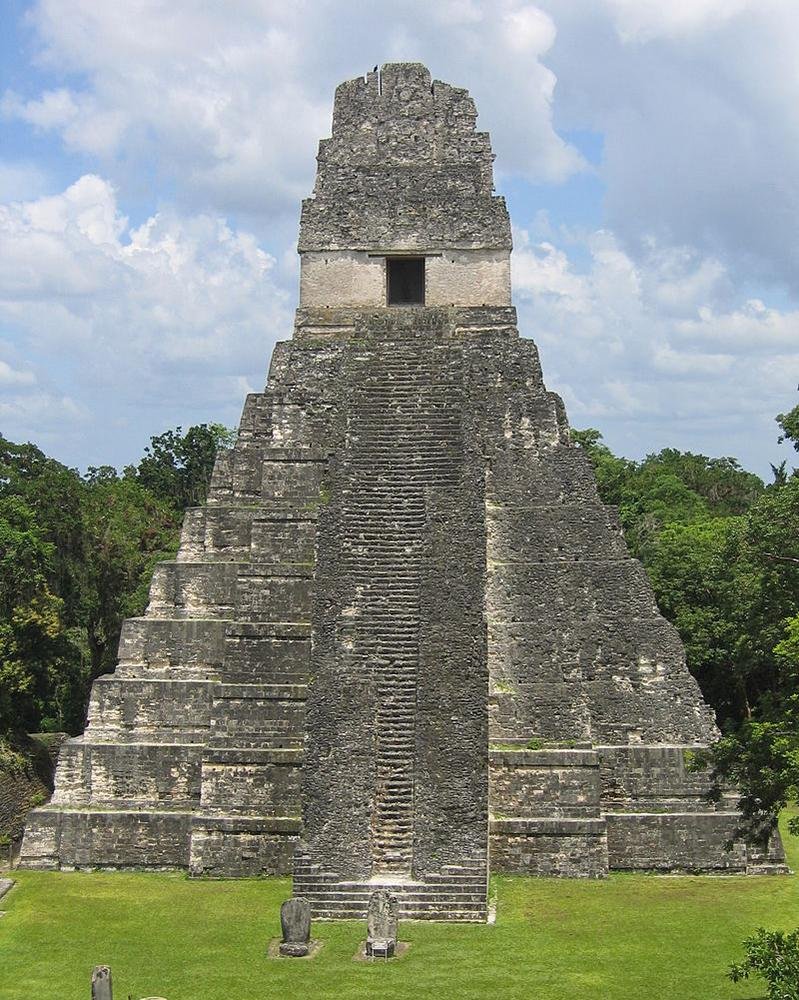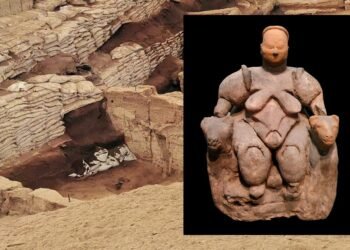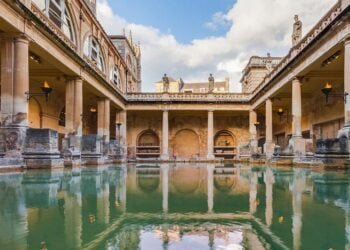Tikal is an ancient Mayan city located in the dense jungles of northern Guatemala. It was one of the largest and most important Mayan urban centers, serving as a political, economic, and cultural hub during the height of Mayan civilization.
The history of Tikal dates back to the Preclassic Period (c. 600 BCE – 250 CE), but it reached its peak during the Classic Period (c. 250 – 900 CE).
At its height, Tikal covered an area of approximately 16 square kilometers and was home to an estimated population of 50,000 to 100,000 inhabitants. It was a thriving city with monumental architecture, advanced agricultural practices, and a complex social and political organization.

The city of Tikal is characterized by its impressive temples, palaces, and plazas, showcasing the architectural achievements of the Mayan civilization.
Temples:
Tikal is home to numerous temples that served as religious and ceremonial centers. These temples are characterized by their pyramidal structures, often with multiple tiers or platforms. The temples were built on top of earlier structures, creating layers of architectural history. Each temple was dedicated to a specific deity or represented a sacred place.
The most iconic structure is Temple IV, also known as the Temple of the Two-Headed Serpent. It stands at over 70 meters (230 feet) tall, making it one of the tallest pyramids in the Mayan world. Climbing to the top of Temple IV offers breathtaking panoramic views of the surrounding jungle canopy.

The other important temple at Tikal is Temple I, also known as the Temple of the Great Jaguar. It stands prominently in the Great Plaza and reaches a height of approximately 47 meters (154 feet). Temple I is a classic example of Mayan temple architecture, featuring steep steps leading to a flat-roofed platform at the top, where ceremonies and rituals were conducted.

Altars:
Altars are significant components of Mayan religious practices, serving as sacred spaces for offerings, sacrifices, and communication with the divine. Altars at Tikal are usually rectangular or square in shape and made of stone. They often depict elaborate carvings and iconography related to deities, rituals, and mythological narratives.
Altar 5 is a notable example at Tikal. It is located in the North Acropolis and features intricate carvings depicting a ruler participating in a ritual bloodletting ceremony.
Lintels:
Lintels are horizontal beams that span the space between two vertical supports, often found above doorways or openings. They serve as structural elements and artistic canvases for intricate carvings. The lintels at Tikal are particularly renowned for their detailed relief sculptures, depicting various mythological scenes, rulers, deities, and important events.

One of the most famous lintels at Tikal is Lintel 3, also known as the Tikal lintel. It depicts the ruler Jasaw Chan K’awiil I in an elaborate ceremonial headdress, engaged in a sacred ritual.
The lintels of Tikal showcase the artistic skill and craftsmanship of the Mayan people. They also serve as important historical records, documenting significant events, royal lineages, and religious symbolism.
The Great Plaza is another significant feature of Tikal. It is a vast open space flanked by the North and Central Acropolis. The North Acropolis is a collection of palaces and residential structures, while the Central Acropolis consists of elevated platforms and temples. The plaza was a focal point for ceremonies, rituals, and public gatherings.
One of the notable aspects of Tikal is its intricate system of causeways and sacbeob (raised roads) that connected various parts of the city. These causeways were essential for trade, communication, and the movement of people within Tikal. The city also had an elaborate water management system, with reservoirs and canals that provided a reliable water supply for the population.
Tikal’s decline began in the late 9th century, along with the decline of the Mayan civilization as a whole. The reasons for the collapse are still debated among scholars, but factors such as environmental degradation, overpopulation, warfare, and political instability likely played a role. By the 10th century, Tikal was largely abandoned and became engulfed by the encroaching jungle, hidden from the outside world.
In the 19th century, Tikal was rediscovered by explorers and archaeologists, and extensive excavations and restoration work have been carried out over the years to uncover and preserve its magnificent structures. The site’s significance lies not only in its architectural grandeur but also in the wealth of knowledge it provides about the Mayan civilization, including its art, astronomy, religious practices, and social structure.
Today, Tikal is recognized as a UNESCO World Heritage Site and remains one of the most iconic and well-preserved archaeological sites in the Americas.























Comments 0